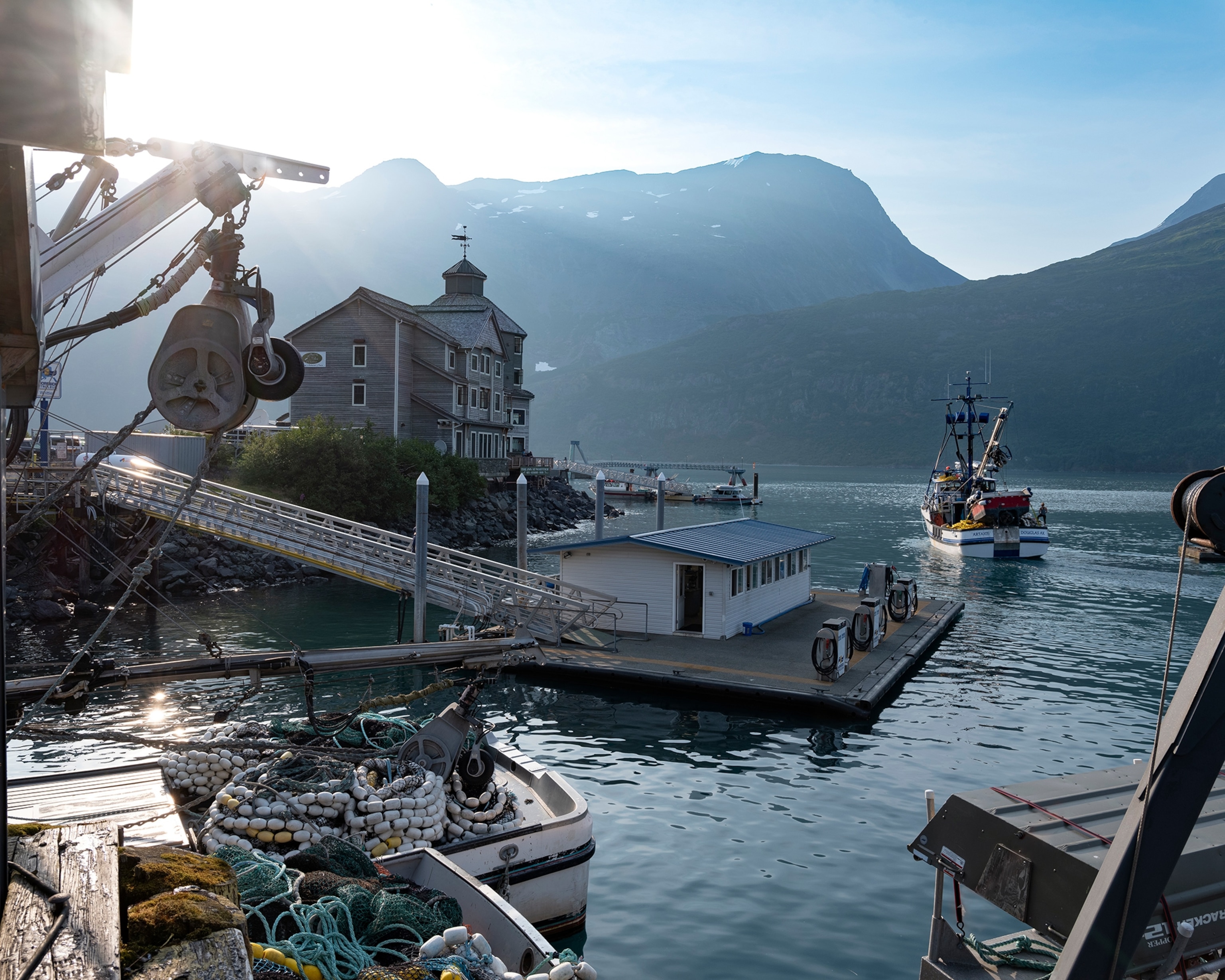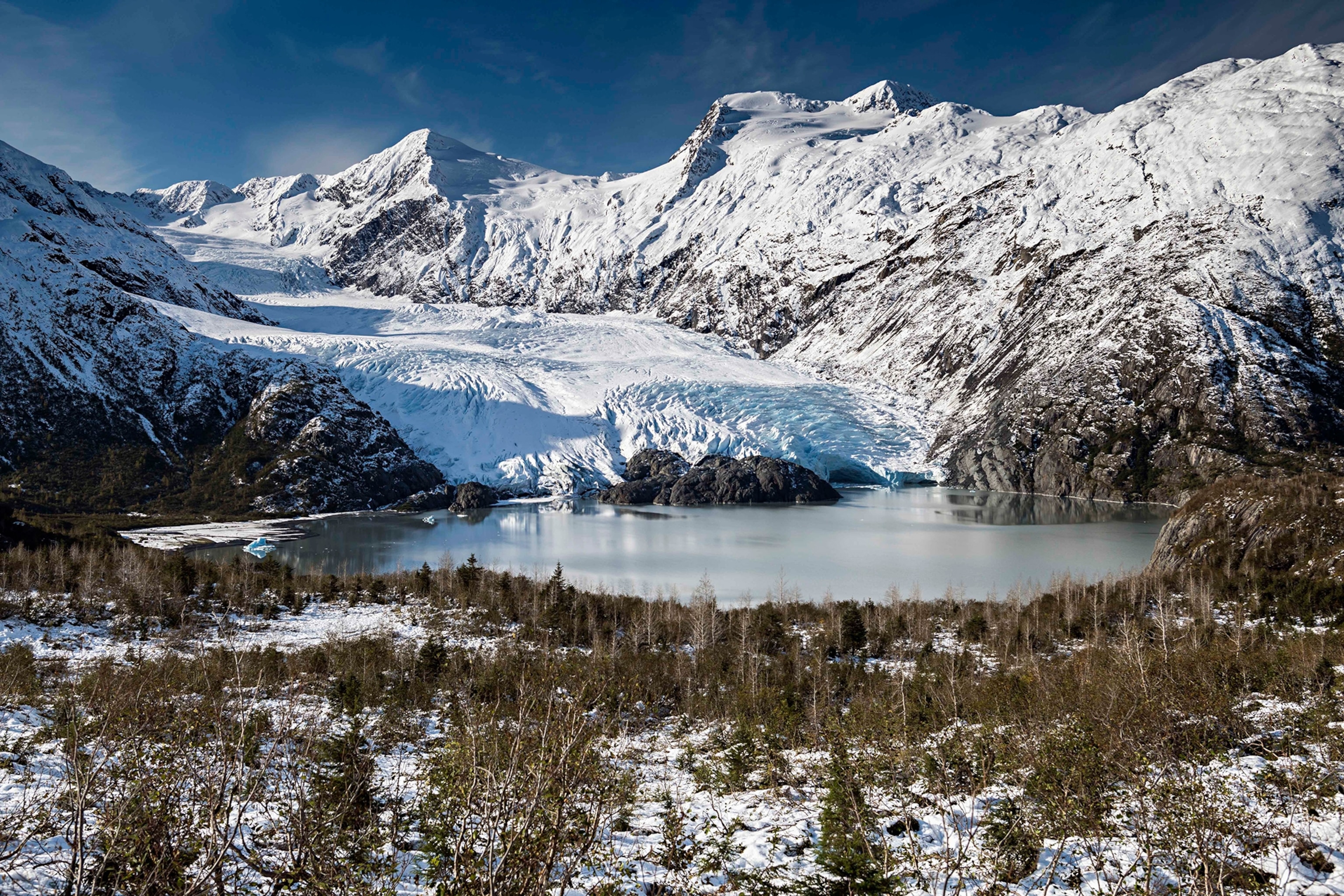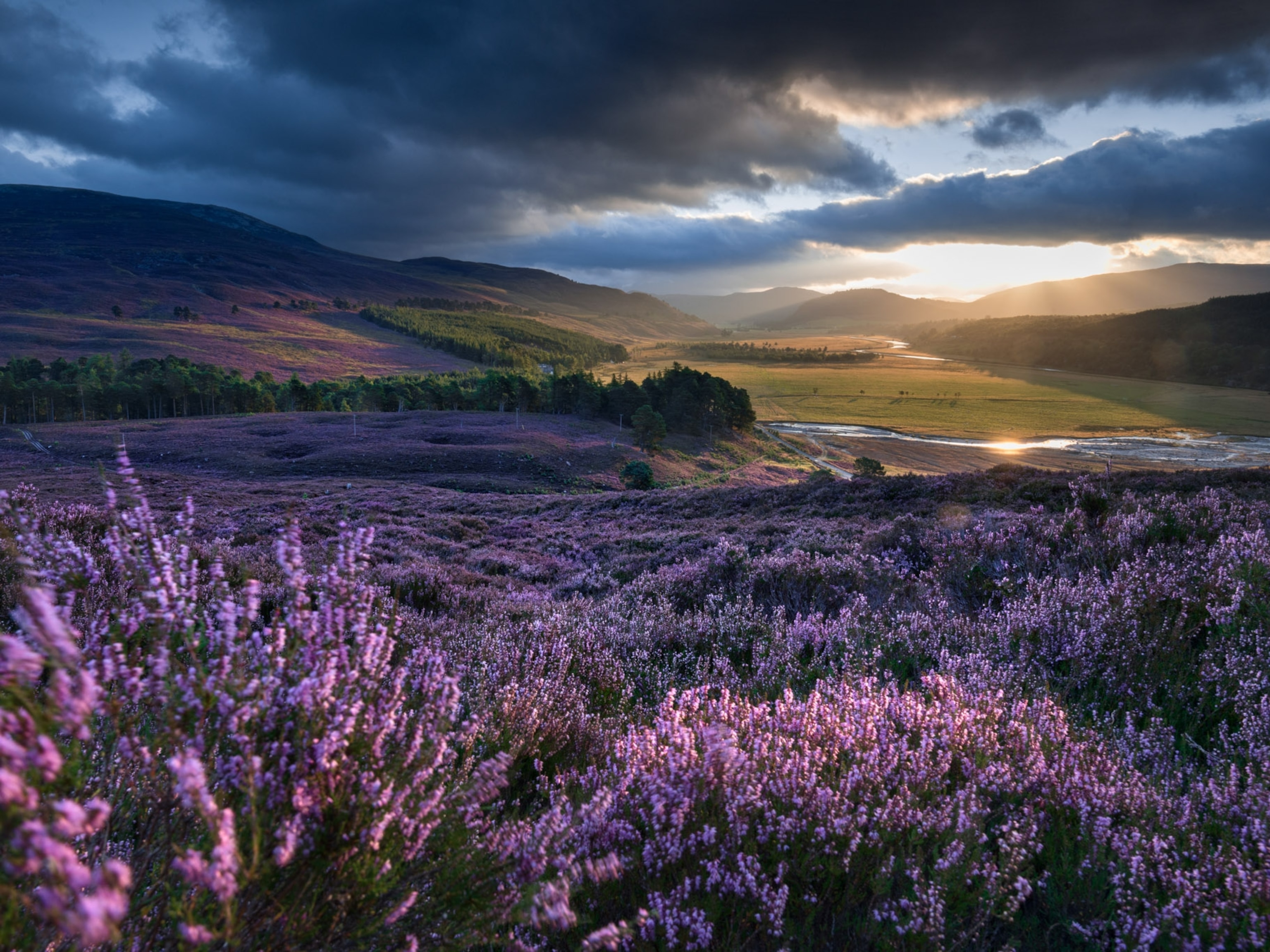
In this one-house town, Alaska’s wilderness is at your fingertips
You might not think Whittier—a town with fewer than 300 residents—would be the gateway to multiple cruise ship docks, a major railhead, dozens of glaciers, and a temperate rainforest. You’d be wrong.
There’s only one way to arrive by land into Whittier, Alaska: a 2.5-mile-long one-lane tunnel. Once part of a World War II railway, the underpass’ rugged walls remind you that you’re driving straight through a 4,000-foot mountain.
As you drive toward the city’s heart, Alaska’s famed Prince William Sound and a small harbor are on the left. To the right, a massive waterfall cascades down the verdant face of the mountain you just drove through. Looking a mile and a half behind you along the coast, you’ll see a new cruise ship terminal set to open this summer.
“You’re not going to see very many places that have a couple of cruise ship docks, a major railhead, a ferry terminal, and a small boat harbor, with fewer than 300 residents,” says Dave Dickason, mayor of Whittier.
But there’s another side to Whittier that someone just passing through may never see. Most of Whittier’s 280 residents live in the 14-story Begich Towers Incorporated, or “the BTI” to locals, because the Alaska Railroad owns most of the land around the city. Built in the late 1950s as a U.S. Army barracks, the peach-colored condo building has its own post office, library, grocery store, and an underground tunnel that leads to the school.
“It’s that feeling of living in a college dorm, but you’re an adult and you don’t have a resident advisor,” says Jamie Loan, the city’s planning and zoning commissioner.

(Visiting Alaska? Here’s what the locals love.)
A growing number of visitors are flocking to this remote seaside town, an hour’s drive south of Anchorage, to trek some of Alaska’s best short-distance hiking trails, including the four-mile jaunt over Portage Pass, and discover the wealth of outdoor recreation tours and activities.
With more than a half million visitors passing through the tunnel each year and a second cruise ship dock already under construction, Whittier’s volunteer-led government is taking measures to preserve the town’s small community.
Small town, big adventure
There are few places in Alaska where travelers can spot more than two dozen glaciers in one day; kayak through the state’s pristine waters; zip into Prince William Sound via Jet Ski, motorboat, or stand-up paddleboard; hike to a waterfall in a temperate rainforest; and sample some of the best fish and chips you’ll get anywhere on the planet.
“If you are looking for a different, wonderfully odd, amazing place to come do some unique stuff, Whittier is a place that, even as somebody who grew up in Alaska, I don’t think I gave enough credit to until I really spent time there,” says Charlie Howard, co-owner of Glacier Jetski Adventures. Whittier’s geographic location, protected waters, and proximity to tidewater glaciers drew him and his wife, Bec, to choose the town as a base of operations in 2014.
Howard, who grew up in Juneau, saw firsthand what happens when out-of-town conglomerates take over locally owned businesses to serve massive numbers of cruise ship passengers.
“Whittier is a place where there’s still some room for a guy like myself, with just a dream, an idea, and a little bit of capital, to start something new and exciting,” he says.
(Discover an isolated Alaska island where walruses sing.)
While increased cruise ship travel would serve as a much needed revenue stream to support the town’s infrastructure, there are still concerns of how to grow the city sustainably, especially when visitors from a single cruise ship can outnumber the locals, 10 to one.

“The conversation that happens in Whittier most often, I think, is about space,” says Loan. “Whether it’s housing or land use, we’re always talking about how we can maximize what we do have.”
Still, from finishing the last leg of a trail loop that will highlight the town’s most scenic waterfalls to building a new, accessible walkway near the harbor, the city is hopeful that it can welcome a booming number of visitors and remain the sort of place where the entire community is invited for daily breakfast at the school.
(More than a quarter of this national park is covered by glaciers.)
“We know that people are coming. But it has to start with us, and it has to also be good for us residents, too,” says Loan.
What to know
The Anton Anderson Memorial Tunnel—the longest combined vehicle-railroad tunnel in North America—is open from 5:30 a.m. to 11:15 p.m. in summer and 7:00 a.m. to 10:45 p.m. in winter. Vehicle traffic changes direction every 30 minutes or stops entirely when a train passes. If you’re still in Whittier when the tunnel closes, you’re staying there for the night.
Where to stay: Whittier has two hotels. The Inn at Whittier is only open during the summer; the Anchor Inn is open year-round. You’ll also find some short-term rental condos available through services like Airbnb.
Where to eat: The Swiftwater Seafood Cafe is legendary for its fresh-out-of-the-water fish and chips.
What to book: See glaciers in the Prince William Sound with Glacier JetSki Adventures. Book a wildlife and sightseeing day cruise with Lazy Otter Charters. Try stand-up paddleboarding (or kayaking) with Sound Paddler. Phillips Cruises offers a tour of 26 tidewater glaciers, while Whittier Walks offers historic walking tours.





